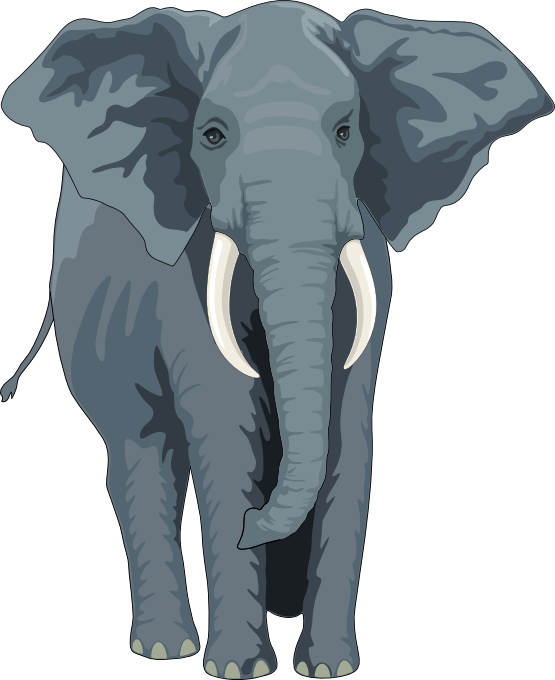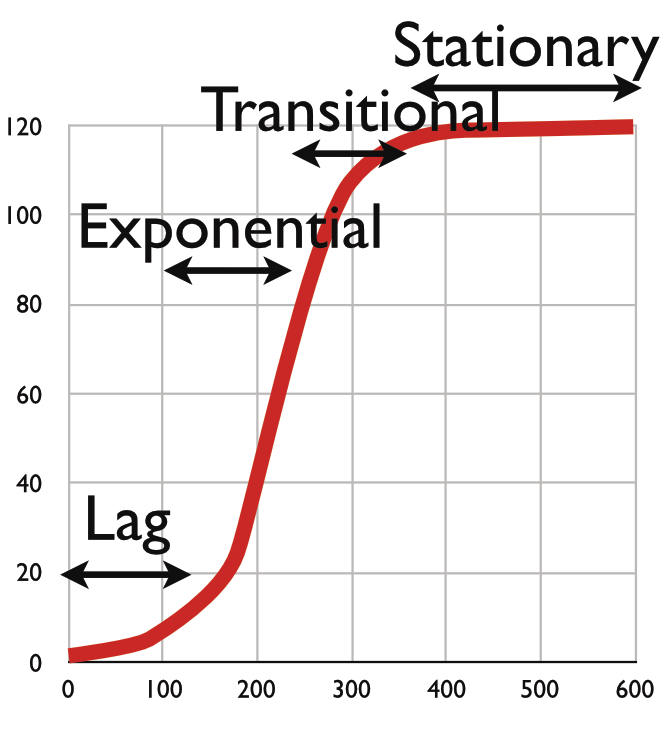2.1.5: Populations Growth
Over time the numbers within a population change. If we were to collect a few bacterial cells, place them in a suitable supply of nutrients and then under a microscope cont the number of cells every hour we would find that there would be many more bacteria at the end of a 24 hour period than at the start.
It is possible to model this growth as a mathematical equation:
Population growth = change in population number / change in time
or dN/dt
Where dN = change in numbers and dt = change in time
This equation can also be written using the symbol delta to represent time:

Exponential Growth

Thinking about the bacteria above, if I started out with one bacteria (bacteria reproduce asexually so a population can start with one)and if the bacteria reproduced one after 5 minutes and then died every, after 30 minutes I would have 64 bacteria – the population size would double every 5 minutes. This means that the each time the population changes it increases the amount of population change next time. More simply the rate of population growth increases as the population grows or exponential growth. This can be expressed as a rate equation.

This produces a J shaped curve. As long as their is a plentiful supply of the resources that the organism needs. in the case of bacteria: sugars, moisture and warm the population would keep growing indefinitely.
Obviously in nature this does not happen. Darwin in Origin of Species (p117 -119) recognizes that this would be an absurd proposition

“There is no exception to the rule that every organic being increases at so high a rate, that if not destroyed, the earth would soon be covered by the progeny of a single pair. Even slow-breeding man has doubled in twenty-five years, and at this rate, in a few thousand years, there would literally not be standing room for his progeny. Linnaeus has calculated that if an annual plant produced only two seeds – and there is no plant so unproductive as this – and their seedlings next year produced two, and so on, then in twenty years there would be a million plants. The elephant is reckoned to be the slowest breeder of all known animals, and I have taken some pains to estimate its probable minimum rate of natural increase: it will be under the mark to assume that it breeds when thirty years old, and goes on breeding till ninety years old, bringing forth three pairs of young in this interval; if this be so, at the end of the fifth century there would be alive fifteen million elephants, descended from the first pair.”

So what stops the planet being knee deep in elephant dung?
Limited resources
All resources in an ecosystem are limited. there is only so much food, only so much space, only so many mates even. The results of these ecological limits or ECOLOGICAL RESISTANCE is that no population can keep growing forever. There is a ceiling limit that each ecosystem sets. This limit set by the resources of the ecosystem is the CARRYING CAPACITY, confusingly given the symbol K in ecology.